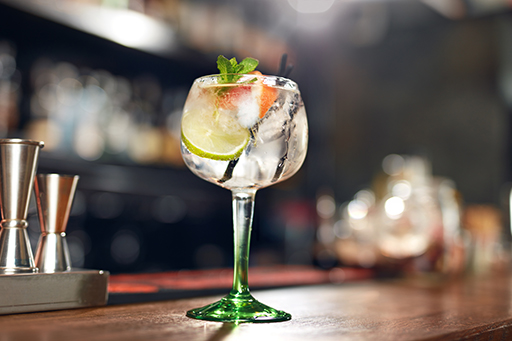Week 6: Distillation and spirits
Introduction
This week you will read about how spirits such as gin are produced.
You will look at the importance of the industry in historical and economic terms, setting the context for this week. You will then be introduced to the distillation process which is used to produce beverages which contain much higher amounts of alcohol than beer – a typical gin, for example, is around 40% alcohol by volume.
You will explore a gin distillery, as you did the brewery earlier in the course, and learn how the flavours are infused into the drink. You will also be introduced to the botanicals used to give gin its unique flavours and further explore the chemistry of taste and smell.
By the end of this week, you will be able to:
- discuss the economic and historical importance of spirits
- explain the process of distillation and how it is used to produce alcoholic drinks
- explain the process by which drinks such as gin are made
- describe how natural flavours and botanicals are used to produce the unique tastes in the gin industry
- describe where the futures of both the brewing and distillery industries may be heading.

